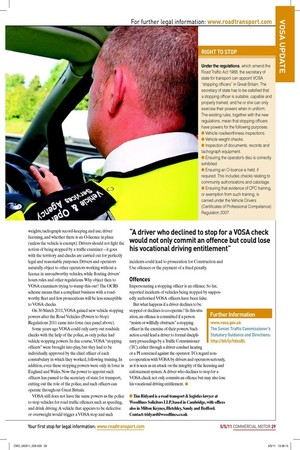RIGHT TO STOP
Page 25

If you've noticed an error in this article please click here to report it so we can fix it.
Under the regulations, which amend the Road Traffic Act 1988, the secretary of state for transport can appoint VOSA “stopping officers” in Great Britain. The secretary of state has to be satisfied that a stopping officer is suitable, capable and properly trained, and he or she can only exercise their powers when in uniform. The existing rules, together with the new regulations, mean that stopping officers have powers for the following purposes:
● Vehicle roadworthiness inspections.
● Vehicle weight checks.
● Inspection of documents, records and tachograph equipment.
● Ensuring the operator’s disc is correctly exhibited.
● Ensuring an O-licence is held, if required. This includes checks relating to community authorisations and cabotage.
● Ensuring that evidence of CPC training, or exemption from such training, is carried under the Vehicle Drivers (Certificates of Professional Competence) Regulation 2007.
















































